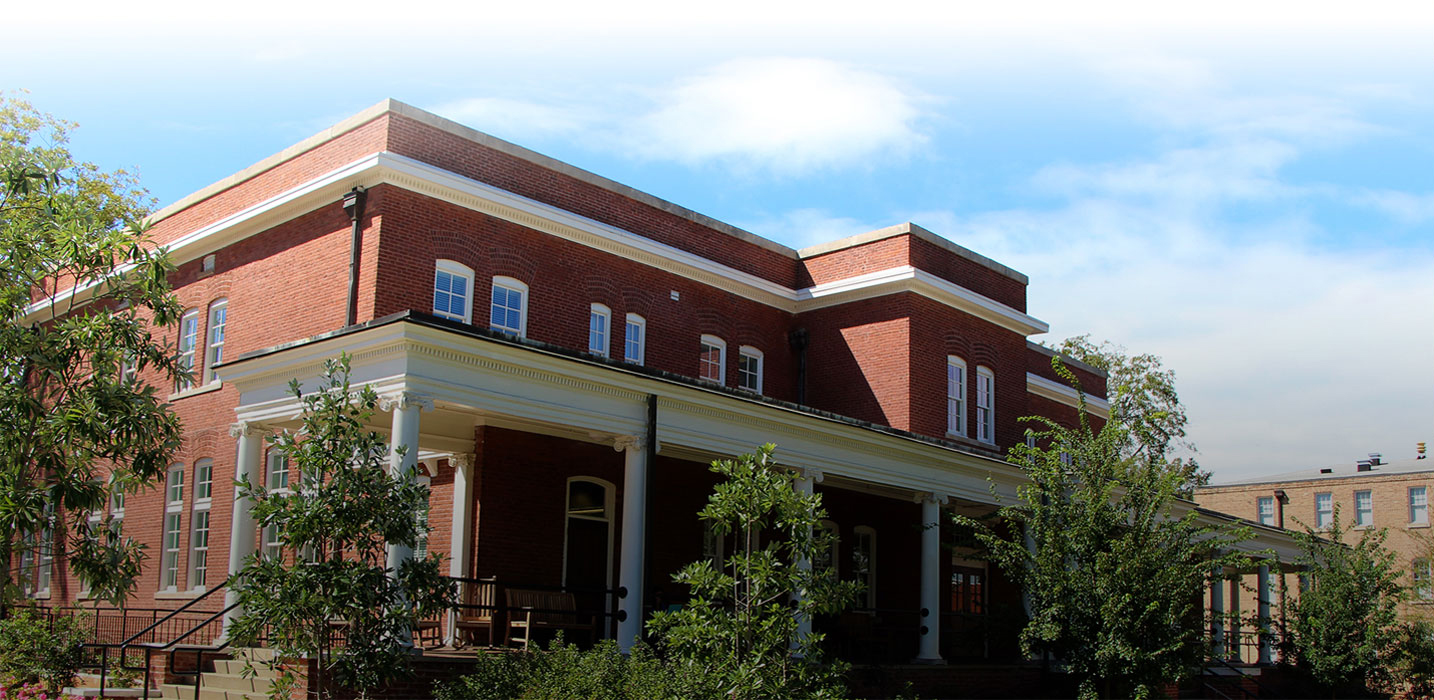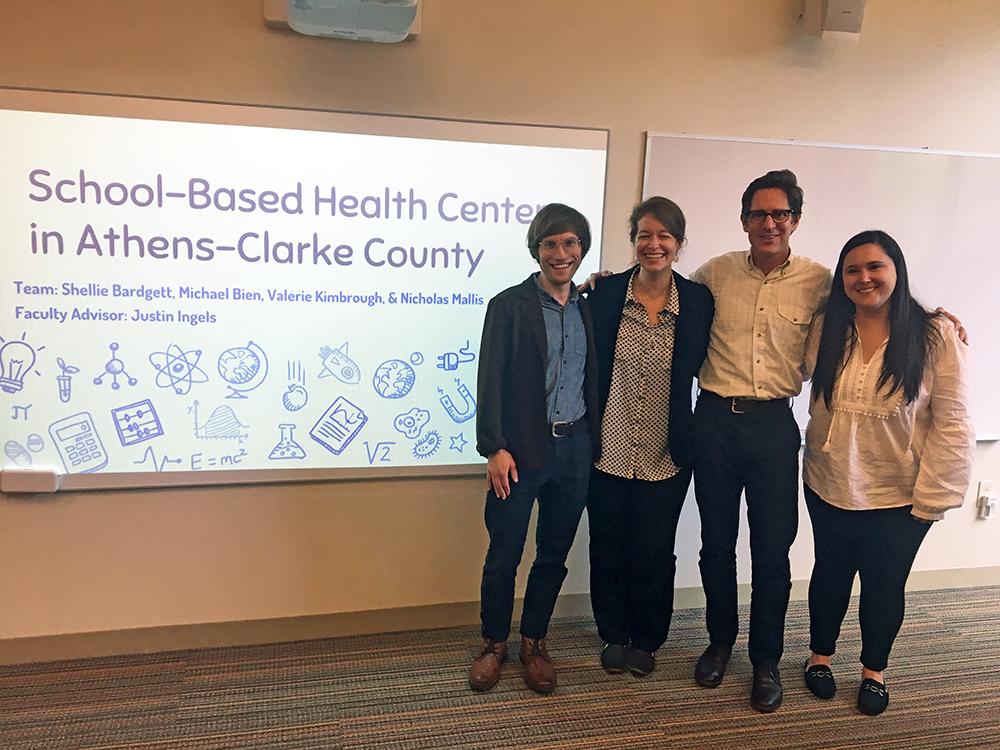This fall, the Clarke County School District (CCSD) opened Northeast Georgia’s first school-based health center (SBHC) on Athens’ east side.
One-third of adults and one in four children in Athens-Clarke County live below the poverty line.
The new clinic will provide comprehensive medical, dental, and health care services to students at Gaines Elementary and Hilsman Middle schools, improving health care access for more than 1,200 children in Athens-Clarke County.
It’s a monumental community health effort that four graduate students from the UGA College of Public Health were able to be a part of through the support of a student-focused mini-grant program, launched in Fall 2018 by the College faculty’s Diversity Committee.
The program, called Community Mini-Grants for Inclusion, Research, and Engagement, awards funding to student-led community outreach projects that focus on addressing health disparities in Athens-Clarke County.
Graduate students Shellie Bardgett (BSHP ’17, MPH ’19), Michael Bien (MPH ’19), Valerie Kimbrough (MPH ’19), and Nicholas Mallis (MPH ’19) received funding through the program in January 2019 for a research proposal exploring the potential need and impact of a school-based health center in Athens.
“School-based health centers can play a big part in improving the health and academic success of students. The aim of our project was to talk to teachers, school nurses, and school community leaders and survey them on the needs of their students and how a community-based clinic might fit in,” said Bien.
The student team’s first assignment was to assist the CCSD task force in the analysis of needs assessment surveys delivered to parents and students at Hilsman and Gaines during March 2019. A total of 125 parents and 427 students completed the surveys. The public health students provided their analysis findings to the SDHC task force in April 2019.
Survey results solidly confirmed a need for an SBHC in Clarke County, said Bien. Nearly one-quarter of the parents surveyed had trouble getting medical, dental or mental health services for their children, and 18% reported no regular source of health care.
Parents also identified the inability to take time off from work and lack of transportation as their most significant barriers to accessing care for their children.
“For low income families, it’s really difficult for parents to leave work to pick up their kid and take them to a doctor,” said Bien. “The new school-based clinic will be able to help parents by providing the care their children need on site and in real time.”
Results from the student surveys confirmed parent survey findings that certain student healthcare needs are not being met, particularly mental health and dental care.
Mallis, who led the CPH team’s analysis efforts, was surprised to see the need for mental health services rank so highly with both parents and students.
“I was a particularly taken aback by the fact that half of the students reported at least one mental health concern. It surprised me that these students, some as young as 4th grade, were saying, ‘Yes, I need mental health services, and I can’t get them.’” said Mallis. “Luckily, one of the main goals of this clinic is to meet this need.”
To help educate Hilsman and Gaines faculty and staff about the benefits provided by the new SBHC and engage their help in getting students enrolled in the clinic, the team developed an outreach plan, including materials that teachers could use to answer questions from students or parents.
“The teachers will be responsible for interacting with parents and obtaining the consent forms required for each child to be able to access the SBHC’s health care services,” said Bien. “So, it was important for us to provide a way to answer questions, show appreciation, and build excitement about the new clinic.”
The effort was a resounding success and the school district is now making plans to adopt the students’ outreach model for their engagement efforts in the upcoming year.
– Rebecca Ayer
Posted on November 13, 2019.
Originally published in the Fall 2019 issue of UGA College of Public Health magazine. Additional coverage UGA Today.
Related Stories:






